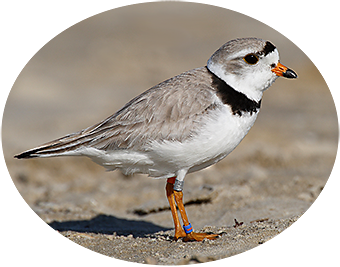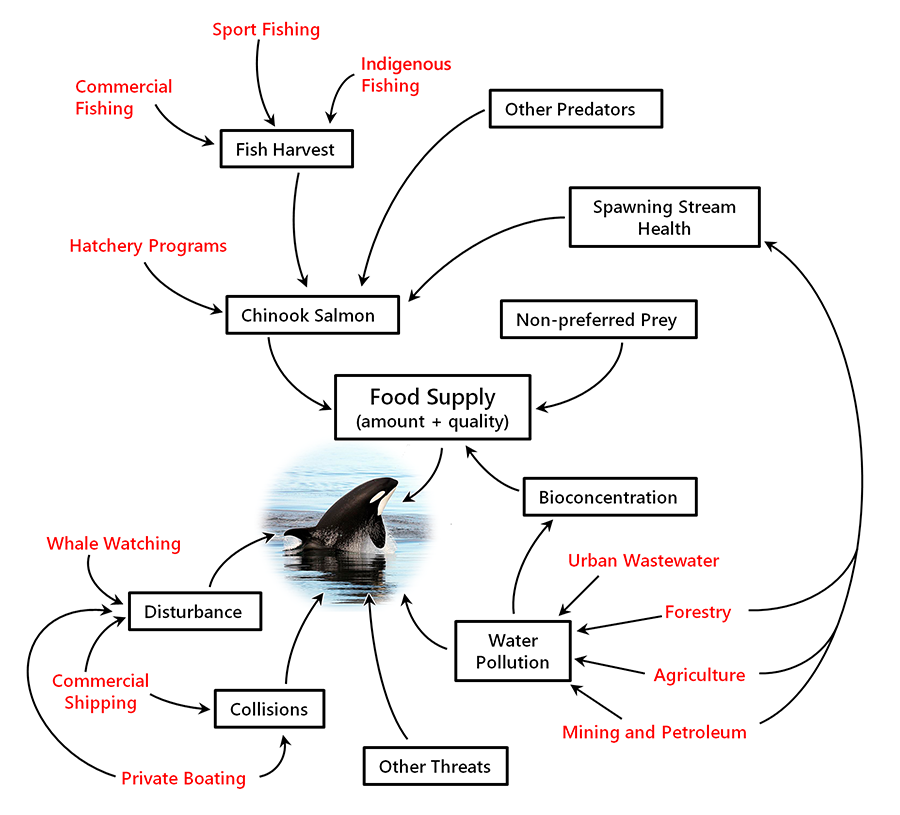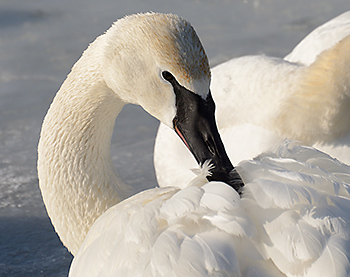Taking Action
Under SARA, the implementation aspects of recovery planning are captured in action plans, which must include the following components (GOC 2002, Sec. 49.1):
- A statement of measures to address threats and achieve recovery objectives, as well as an indication of when those measures will take place
- A statement of measures to protect critical habitat, to the extent that it has been identified
- Methodology for monitoring and reporting on the recovery of the species
- An evaluation of the socio-economic costs of the action plan and the benefits to be derived from its implementation
Although SARA places explicit prohibitions on the destruction of critical habitat as well as on the killing, harming, and capturing of listed species (GOC 2002, Sec. 32 and Sec. 58), these are not ironclad assurances of protection. SARA allows companies and individuals to apply for permits that allow some incidental harm, so long as it does not “jeopardize the survival or recovery of the species” (GOC 2002, Sec. 73).
Furthermore, SARA’s prohibitions only directly apply in areas of federal jurisdiction. Provincial governments make their own decisions about how action plans will be implemented and how critical habitat will be protected on provincial lands. SARA does contain “safety net” provisions that may come into force if a province does not provide adequate protection. However, they have only been used once, for protection of the sage grouse, and only after a successful court challenge (Olive 2015). The reality is that the federal government will not readily intrude into areas of provincial jurisdiction.
Finally, recovery measures are constrained by conflicts with competing land-use objectives. SARA clearly acknowledges that socio-economic factors need to be considered at the action planning stage. However, it is largely mute on how the necessary trade-off decisions are to be made. This has proven to be a point of weakness. Compromises with competing social objectives are often made informally, without transparency or the benefit of a structured decision-making process. In other cases, prescriptions for action are left vague, which avoids conflict but stymies implementation. Because of these shortcomings, there is often little correlation between what is proposed within recovery strategies and what actually happens on the ground.
Land-use conflicts are most acute in the Agricultural South, where recovery strategies must go head-to-head with the livelihoods and legal rights of private landowners. It has long been recognized that species recovery on agricultural lands cannot be achieved by force. Legal arguments aside, heavy-handed efforts to enforce compliance would result in antipathy to recovery programs by landowners, and potentially counterproductive behaviours (Olive and McCune 2017). Furthermore, governments do not have the capacity to monitor the activities of all agricultural producers at all times. Therefore, recovery efforts on private land typically emphasize voluntary collaborative measures that lever the stewardship ethic and positive attitudes toward nature that many farmers and ranchers hold (Henderson et al. 2014).
A contentious aspect of SARA is the reference it makes to compensation (GOC 2002, Sec. 64). On the one hand, it seems unfair to expect individual farmers and ranchers to bear the full economic costs of species protection on behalf of society (Olive 2016). On the other hand, paying compensation sets a dangerous precedent, namely that government will pay private parties, including businesses, for complying with environmental legislation (Smallwood 2003). To date, little money has been paid to farmers as direct compensation for conservation activities. Instead, funding programs, such as the federal Habitat Stewardship Program, generally direct funding to communities and organizations that secure or restore habitat or undertake outreach activities (ECCC 2017a).
In the following sections, we will review the main types of recovery measures included in action plans for species at risk and management plans for other focal species. Working examples are provided in the case studies in Chapter 11. Discussion of monitoring programs is deferred to Chapter 10, as these programs are common to many forms of conservation.
Habitat Protection
Habitat loss and degradation are a concern for most focal species, so habitat protection is among the most widely used conservation measures. The preferred method, from a conservation perspective, is to establish one or more formal protected areas where all resource use is prohibited. But because of land-use constraints, it is rarely possible to establish protected areas tailored to the needs of individual species. Instead, protected areas are usually established through regional initiatives that seek to maximize conservation benefits across multiple species. The needs of focal species must be integrated into these broader planning initiatives (see Chapter 8).
SARA does not demand a prohibition on all human activities within critical habitat, just that the functional role of the habitat be maintained. Therefore, habitat protection often takes the form of limited prohibitions, aimed at curtailing specific types of activities or maintaining specific habitat features. In some cases, blanket prohibitions may be applied, but only for limited periods, such as during the breeding season.
The farther we move from comprehensive protection to narrowly applied prohibitions, the greater the risk that important threats, or the cumulative effect of minor threats, will not be sufficiently accounted for. But higher levels of protection imply less opportunity for resource development. Thus, the determination of how much protection to apply is partly a matter of science, to describe the prohibitions needed to maintain habitat function, and partly a matter of social choice, to identify an acceptable balance among competing objectives.
An important complication in applying habitat protection measures is that the agencies responsible for implementing action plans—primarily provincial fish and wildlife departments—have limited authority over land management. They must collaborate with the agencies and individual landowners that do have this authority. These collaborations can take various forms and are subject to complex power dynamics. In some cases, conservation practitioners simply supply advice or request that the needs of a species be considered (see Box 6.6). In other cases, demands for protection may be harder-edged.
The form of protection applied depends on the type of land management prevalent within a species’ range. On public lands subject to resource development, habitat protection is often achieved through industry operating regulations and voluntary best practice guidelines. Land-use planning and protected area initiatives are also important avenues for achieving protection and connectivity. On private land, protection measures include voluntary stewardship, conservation agreements with landowners, and the outright purchase of land (see Chapters 7 and 8).
Box 6.6. Action Plans with Little Action

Because of planning compromises, many action plans lack strong habitat protection measures, even for species that are highly endangered. The action plan for piping plovers in Ontario (EC 2013) provides an example. The three measures that directly address habitat protection are:
- Encourage stewardship activities that conserve or enhance piping plover habitat and increase nesting success
- Incorporate piping plover habitat needs in beach management plans for public and municipal lands
- Continue to provide advice and recommendations to the Lake of the Woods Control Board regarding water level management on Lake of the Woods
It seems unlikely that these non-specific and largely voluntary measures will be sufficient to ensure that the piping plover’s habitat needs are secured.
Mitigating Threats
As we saw in Chapter 5, species face a wide range of threats besides habitat loss and degradation. Overharvest, invasive species, pollution, disturbance, and altered ecosystem function are among the most common. In practice, mitigation of such threats is rarely undertaken until there is clarity about what can and should be done, especially if it involves regulation. Consequently, the recovery measures in action plans are often research oriented rather than action oriented.
The action plan for resident killer whales in BC is illustrative (FOC 2017a). A conceptual model is available (Fig. 6.16) that links whale viability with specific threats and these threats with potential management levers. Management levers are opportunities for management intervention that directly or indirectly contribute to a desired outcome. These types of models are often referred to as impact hypothesis diagrams or influence maps. Despite all that is known about the killer whale—it is among the most well-studied species in Canada—most of the recovery measures in the killer whale action plan involve research rather than management actions.

Research is needed because management levers are rarely simple on/off switches. Managers need to know how much of an effect is possible, and how much is necessary, and this requires a detailed understanding of the mechanisms involved. There is often pressure to identify minimum thresholds because management actions usually have associated socio-economic costs.
As with habitat protection, the mitigation of specific threats generally requires collaboration with external parties. Returning to our killer whale example, the availability of salmon as a food supply for whales is a critical factor for viability. However, even though Fisheries and Oceans Canada has the legal authority to regulate salmon fishing under both SARA and the Fisheries Act, fisheries management is a politically charged process that demands negotiation rather than coercion. Some form of negotiation with external agencies and affected interests is a management reality for most species, particularly for those in the Agricultural South.
The methods used to implement mitigation measures are similar to those used to implement habitat protection. Regulation is a frequently used tool and is applied to industrial practices, pollution, access development, and recreation. Such regulations are often designed to support broad conservation objectives rather than the specific needs of individual species. Regulation is complemented by best practice guidelines, stewardship programs, and education programs.
Augmentation and Reintroduction
In addition to habitat protection and the mitigation of specific threats, species recovery can be enhanced by augmenting the growth of existing populations and by reintroducing populations into abandoned areas of former range (Fraser 2008; IUCN 2013). Successful Canadian reintroduction programs have involved peregrine falcons, wood bison, swift foxes, and many other species (see Case Study 4). Populations may also be introduced into new regions, a topic we will discuss in the context of climate change adaptation in Chapter 9.
Box 6.7. Augmentation Terms
Augmentation: the release of individuals into an existing population of conspecifics. Also referred to as restocking or supplementation.
Introduction: the release of an organism outside of its historical range. In the context of climate change this is often referred to as assisted migration or assisted colonization.
Reintroduction: the release of an organism into a part of its native range from which it has become extirpated in historical times.
Translocation: the intentional release of organisms from one area into another.
Population augmentation can be achieved either by translocating individuals from a donor population or by increasing the number of young produced locally (George et al. 2009). The latter usually involves some form of captive rearing that protects and nurtures young individuals during their most vulnerable period.
Population augmentation is an adjunct rather than a replacement for other recovery methods. Its main role is to reduce the time that a population spends within an extinction vortex. If the population is to become self-sustaining, the root causes of the initial decline must also be addressed. Thus, habitat protection, threat mitigation, and population augmentation should be seen as parts of an integrated package. Tactical modelling of demographics and habitat can provide valuable insight into how these pieces all fit together and how individual projects can be optimized.
Augmentation projects and reintroductions are time-consuming and costly and should not be undertaken without careful consideration of the factors that contribute to a successful outcome. Indeed, surveys suggest that many past projects have been unsuccessful (Godefroid et al. 2011; Cochran-Biederman et al. 2015). Furthermore, because of the costs involved, trade-offs with other conservation opportunities need to be considered (though high-profile reintroductions often draw funding from new sources). The IUCN has developed guidelines designed to ensure that reintroductions are appropriate and effective. These guidelines provide a useful starting point for new projects (IUCN 2013).
An important consideration in augmentation programs is the genetic composition of the individuals being released (Armstrong and Seddon 2008). The source population for breeding stock or translocations should be as similar as possible to the target population so that any existing genetic adaptations will be appropriate for the local environment. But it is also important to maximize genetic variability, as this provides the genetic basis for adapting to environmental change (Jamieson 2011).
In fish, where captive rearing is widely used, it has been shown that a decline in fitness from inbreeding can occur relatively quickly (George et al. 2009). For example, without precautions, the loss of fitness in hatchery-reared salmonids may negate any gains from captive rearing in only four to six generations (Bowlby and Gibson 2011).
The choice of release site is another factor that can influence the success of augmentation projects, particularly for reintroductions (Armstrong and Seddon 2008). Selected sites should feature the habitat conditions associated with maximal population growth across multiple ecological and temporal dimensions. This is another role for habitat modelling. In addition, consideration should be given to future human development trajectories. In some cases, lower quality sites may be preferred if they are better protected than higher-quality areas.
Program outcomes are also influenced by the release methodology. Key factors include the number of individuals released, the age at release, the number of years over which releases are made, and the use of “soft release” techniques that allow individuals to gradually acclimatize to their new surroundings (Holroyd and Bird 2012; Cochran-Biederman et al. 2015). In terms of numbers, the general rule is “more is better,” but this is constrained by cost and the health of the donor population.
As for age at release, the aim is to bypass the highly vulnerable stages of early growth. The trade-off is that delayed release increases program costs and may compromise the ability of individuals to exist independently in the wild (Lagios et al. 2015). The optimal choice for each of these factors will differ among species and settings, and some fine tuning through trial and error is generally required (e.g., Mitchell 2011). This calls for an adaptive management approach (see Chapter 10).

Lastly, successful programs require adequate funding, technical expertise, organizational capacity, and continuity (Perez et al. 2012). Stakeholder and public support are also important (Fig. 6.17). In many cases, it is necessary to overcome resistance to actual or perceived constraints on human activities that may accompany a reintroduction. As with the threat mitigation measures we discussed earlier, conservation practitioners usually rely on education, negotiation, and possibly compensation to achieve support.

